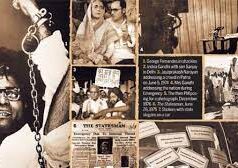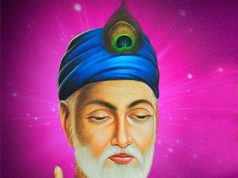
Archaeological explorations have established the presence of Hindu culture in Arunachal Pradesh. Concerted efforts are needed to historically evaluate the ancient history of the State
Arunachal Pradesh, the abode of the sun god, has a long international boundary, which it shares with Bhutan on the west, China on the north and north-east and Myanmar on the south-east side. The history of Arunachal Pradesh goes back to hundreds of years in time into the mist of traditions and myths. The limited ethno-historical and ethno-archaeological works undertaken in the State hamper the reconstruction of the history and culture of the State in a strict chronological order.
Although the history of pre-modern Arunachal Pradesh remains shrouded in mystery, the historiography of religion in the State is overwhelmed primarily with discussion on tribal religion and partially, on Buddhism. Historians have recorded the existence of the Hindu culture and religious motifs in the State from the times of the Ramayana and the Mahabharata (c 500-400 BC). Puranic literatures strengthen this evidence as well. The Lohit River, which feeds into the Parshuram Kund, was known as Lauhitya in Puranic times.
Various places in Arunachal Pradesh find mention in the Hindu epics. Kalika Purana describes upper Lohit valley as prabhu kutar and Subansiri valley as prabhu parbat. The present ruins of Bhismaknagar near Sadiya are said to represent the palace of King Bhismaka, alluded to in the Bhagavata Purana. Two copper plates with Sanskrit inscriptions have been discovered from the copper temple near Bhismaknagar.
Various tribes of Arunachal Pradesh, such as the Karbi, consider themselves as the descendants of Bali and Sugriva (from Ramayana). The Tiwas are proud of being the descendants of Devi Sita.
The Mishmis trace their ancestry to the legendary king Bhismak and through him to his daughter Rukmini and Lord Krishna. The presence of Shaivism influence with phallic worship in the sub-hills bordering the Brahamaputra valley and remote areas of Tawang is also evident.
During the 19th century, British administrators and scholars recorded oral history of various tribes and also explored Bhismaknagar, Tameshwari temple, Bhalukpong, Rukmini nagar, Ita fort among others.
The archaeological section of the Directorate of Research in the State conducted excavations and explorations towards the later decades of the 20th century and beginning of the 21st century. A large Shiva Lingam was unearthed in Lohit district during excavations during 1965-67. A series of excavations followed in Bhismaknagar, Malinithan, Vijaynagar, Rukmininagar and Naksa Parbat over the next decades.
The inscriptions found at Tamresari temple and Bhismaknagar fort was written in Sanskrit, Assamese and Bengali script. One of the inscriptions is translated to ‘Sri Sri Lakshmi Narayan Japa’. Parshuram Kund, located near Tezu in the Lohit district, has been visited by Hindu devotees since long. The legend described in the Kalika Purana of the eighth century mentions that Lord Parasurama washed off his sin of matricide by taking bath at this place.
Bhismaknagar, located near Roing in the lower Dibang valley district, also finds mention in Kalika Purana. The place was ruled by King Bhismaka, father of Rukmini, wife of Lord Krishna. Malinithan is a complex of temple ruins located in the foothills of west Siang district. Excavations conducted over the years have unearthed four separate temple bases and a large number of sculptures and idols of Hindu gods and goddesses.
Well carved and decorated stone structures speak volumes about the glorious past of the temple complex. The place is associated with the legend of Lord Krishna who rested at this place with his wife Rukmini on their way back from Bhismaknagar as described in Kalika Purana. They were welcomed by Lord Shiva and his consort goddess Parvati with garlands and flowers. Lord Krishna addressed the goddess Parvati as ‘Malini’ and said that she would be worshipped at this place with this new name and the place has since become famous as Malinithan or the ‘abode of Malini’.
The temple complex dates back to ninth to 13th century AD and the influence of earlier period rulers of Assam dating back to 700 to 950 AD cannot be ruled out. Directorate of Research has extensively studied and recorded these excavations. Many sculptures/stone structures are either lying in the open or are preserved in the site museum, including temple parts, idols of gods/deities, rishis and sages, gandharvas, apasaras and other human and animal figures.
The presiding deity of the temple is Durga (Malini). The present image of the goddess was reconstructed from broken pieces found during the excavation. Besides Durga, idols of Nandi, Indra, Surya, Brahama, Ganesha, Lakshmi, Saraswati, Varaha, Radha, Krishna, Shiva Linga and numerous other stone figures can be seen in the temple complex.
Akashiganga, located near Malinithan, is considered as one of the 51 sacred shakti peethas associated with the legend of goddess Parvati. The legend says that the head of the sati had fallen at this place. Malinithan and Akashiganga draw huge number of pilgrims and tourists from different parts of the country.
The latest surface discovery in the State is that of the tallest Shiva Linga in the world at Ziro in the Lower Subansiri district. The miraculous discovery of Shiva Linga happened in the holy month of Shravan in the year 2004 in the deep forest. It is believed that the appearance of the Linga at this place finds mention in chapter 17 of Rudra Khand of the Shiva Purana. The natural rock mass Shiva Linga is 25 feet high and 22 feet in circumference. A constant stream of water flows beneath the Linga which is surrounded by other members of the Shiva parivar. The trunk of Lord Ganesha is in the front side while the goddess Parvati and Lord Kartikeya are on the back side in the form of smaller Lingas.
Sources have reported unearthing and discovery of idols and images of Hindu gods and goddesses in the fields and at various construction sites in the State. Some of the idols have been installed in the newly-built temples while local people worship the others at their homes. Archeological evidence corroborates the mythological legends and beliefs prevalent over the centuries.
The ‘Nehruvian policy’ in post-independent India encouraged various tribes in the State to grow as per their own genius and tradition overlooking the danger of complete annihilation of the existing cultural ethos. Subsequent decades witnessed intensive studies of various ethnic groups/tribes by the historians and scholars to the extent of projecting tribal religion as the only authentic form of religion in Arunachal Pradesh.
However, archaeological evidence and explorationsin in the recent past have established the presence of Hindu religion in Arunachal Pradesh dating back to many centuries. Concerted efforts are needed to historically evaluate and appropriately integrate these findings to reconstitute the ancient history of the State.
By Jagdish Kaur
(The writer is a doctor with deep interest in the history and culture of India and is author of, ‘Arunachal Pradesh- Rediscovering Hinduism in the Himalayas’)
Courtesy: Daily Pioneer














